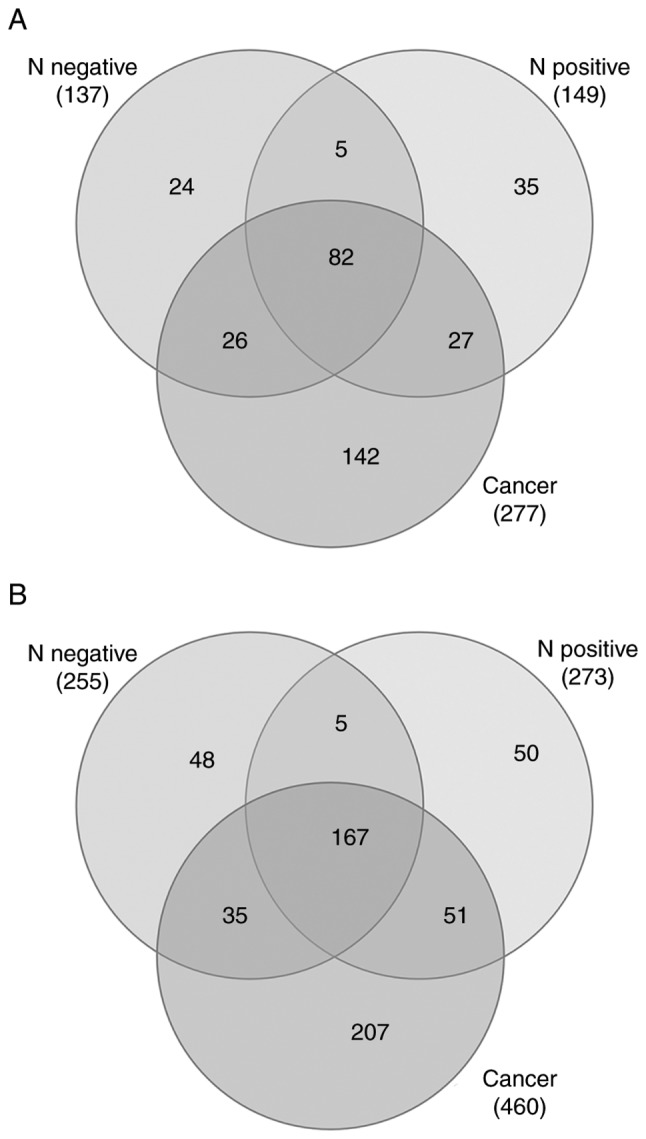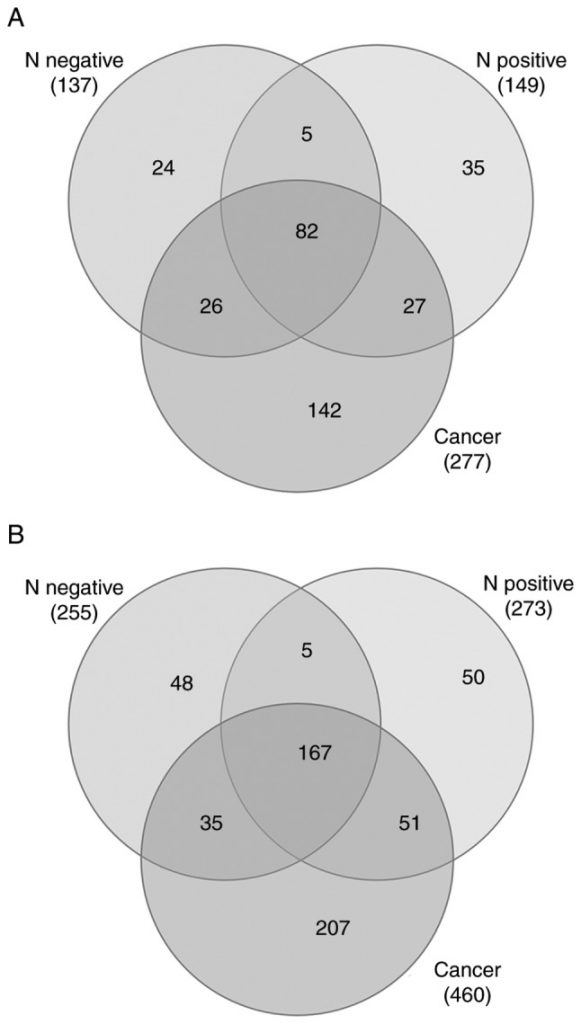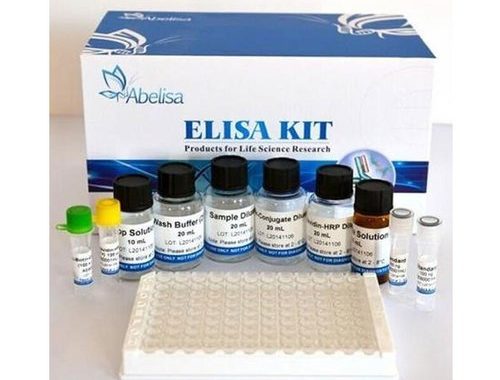
Identification of potential cervical cancer serum biomarkers in Thai patients.
Cervical cancer is one of the most typical causes of cancer-associated mortality in females worldwide. Serum biomarkers are vital instruments for analysis, illness staging, monitoring remedy and detecting recurrence in differing types of cancer. However, solely a small quantity of established biomarkers have been used for scientific analysis of cervical cancer.
Therefore, the identification of minimally invasive, delicate and extremely particular biomarkers for detection of cervical cancer could enhance outcomes. In the current pilot research, adjustments in disease-relevant proteins in 31 sufferers with cervical cancer had been in contrast with 16 wholesome controls.
The Human 14 Multiple Affinity Removal system was used to deplete the 14 most ample serum proteins to lower pattern complexity and to complement proteins that exhibited decreased ranges of abundance in the serum samples. Immunoaffinity-depleted serum samples had been analyzed by in-gel digestion, adopted by liquid chromatography mass spectrometry evaluation and knowledge processing.
Automated quantitative western blot assays and receiver working attribute (ROC) curves had been used to guage the differential protein expression ranges between the 2 teams. Capillary electrophoresis-based western blot evaluation was carried out to quantitatively decide serum ranges of the candidate biomarkers.
Significantly elevated ranges of α-1-antitrypsin (A1AT) and pyrroline-5-carboxylate reductase 2 (PYCR2) had been detected, whereas the degrees of transthyretin (TTR), apolipoprotein A-I (ApoA-I), vitamin D binding protein (VDBP) and multimerin-1 (MMRN1) had been considerably decreased in sufferers with cervical cancer in contrast with the wholesome controls.
ROC curve evaluation indicated that the sensitivity and specificity was improved by way of the mix of the 6 candidate biomarkers. In abstract, the outcomes demonstrated that 6 candidate biomarkers (A1AT, PYCR2, TTR, ApoA-I, VDBP and MMRN1) exhibited considerably totally different expression between serum samples from wholesome controls and sufferers with cervical cancer.
These proteins could signify potential biomarkers for distinguishing sufferers with cervical cancer from wholesome controls and for differentiation of affected person subgroups.

Blood-derived biomarkers correlate with scientific development in Duchenne muscular dystrophy.
Duchenne Muscular Dystrophy is a extreme, incurable dysfunction attributable to mutations in the dystrophin gene. The illness is characterised by decreased muscle operate, impaired muscle regeneration and elevated irritation. In a scientific context, muscle deterioration, is evaluated utilizing bodily assessments and evaluation of muscle biopsies, which fail to precisely monitor the illness development.
This research purpose to substantiate and asses the worth of blood protein biomarkers as illness development markers utilizing one of the most important longitudinal assortment of samples.A complete of 560 samples, each serum and plasma, collected at three scientific websites are analyzed utilizing a suspension bead array platform to evaluate 118 proteins focused by 250 antibodies in microliter quantity of samples.
Nine proteins are confirmed as illness development biomarkers in each plasma and serum. Abundance of these biomarkers decreases because the illness progresses however follows totally different trajectories. While carbonic anhydrase 3, microtubule related protein four and collagen kind I alpha 1 chain decline reasonably always over time, myosin mild chain 3, electron switch flavoprotein A, troponin T, malate dehydrogenase 2, lactate dehydrogenase B and nestin plateaus in early teenagers.
Electron switch flavoprotein A, correlates with the end result of 6-minutes-walking-test whereas malate dehydrogenase 2 along with myosin mild chain 3, carbonic anhydrase Three and nestin correlate with respiratory capability.Nine biomarkers have been recognized that correlate with illness milestones, practical assessments and respiratory capability. Together these biomarkers recapitulate totally different levels of the dysfunction that, if validated can enhance illness development monitoring.
You May Also Like

HOW TO VALIDATE A FLOW CYTOMETRY ASSAY
July 1, 2020
Cardiovascular biomarkers in patients with COVID-19
April 10, 2021
